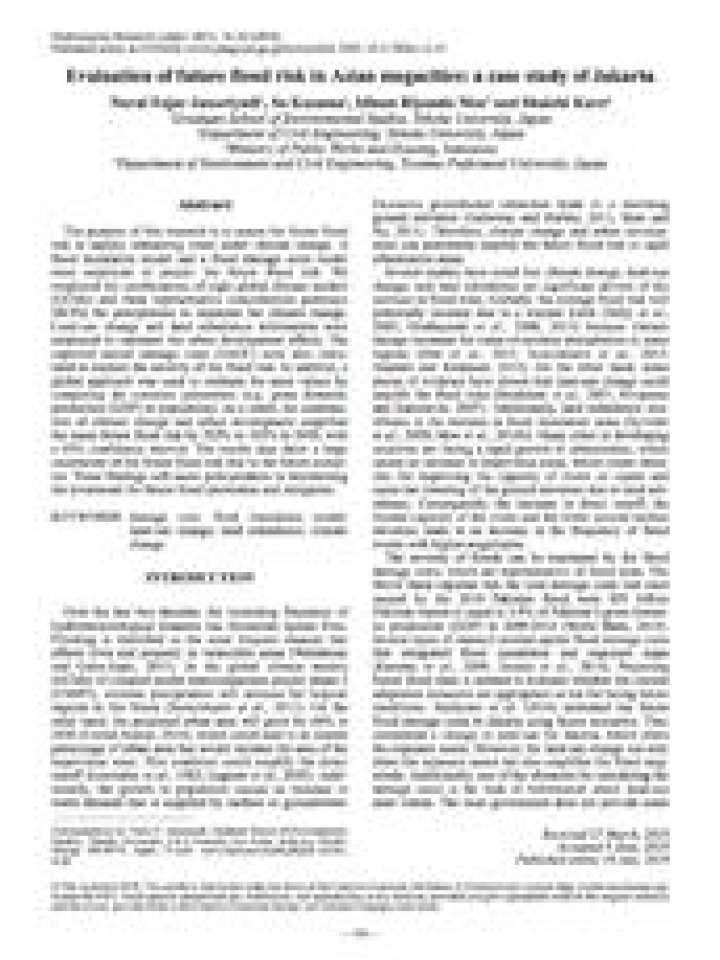Evaluation of future flood risk in Asian megacities: A case study of Jakarta
The purpose of this research is to assess the future flood risk in rapidly urbanizing cities under climate change. A flood inundation model and a flood damage costs model were employed to project the future flood risk. Were employed the combinations of eight global climate models (GCMs) and three representative concentration pathways (RCPs) for precipitation to represent the climate change. Land-use change and land subsidence information were employed to represent the urban development effects. The expected annual damage costs (EADC) were also calculated to explain the severity of the flood risk. In addition, a global approach was used to estimate the asset values by comparing the common parameters (e.g. gross domestic production (GDP) or population). As a result, the combination of climate change and urban development amplified the mean future flood risk by 322% to 402% in 2050, with a 95% confidence interval. The results also show a large uncertainty of the future flood risk due to the future scenarios. These findings will assist policymakers in determining the investment for future flood prevention and mitigation.
Explore further
